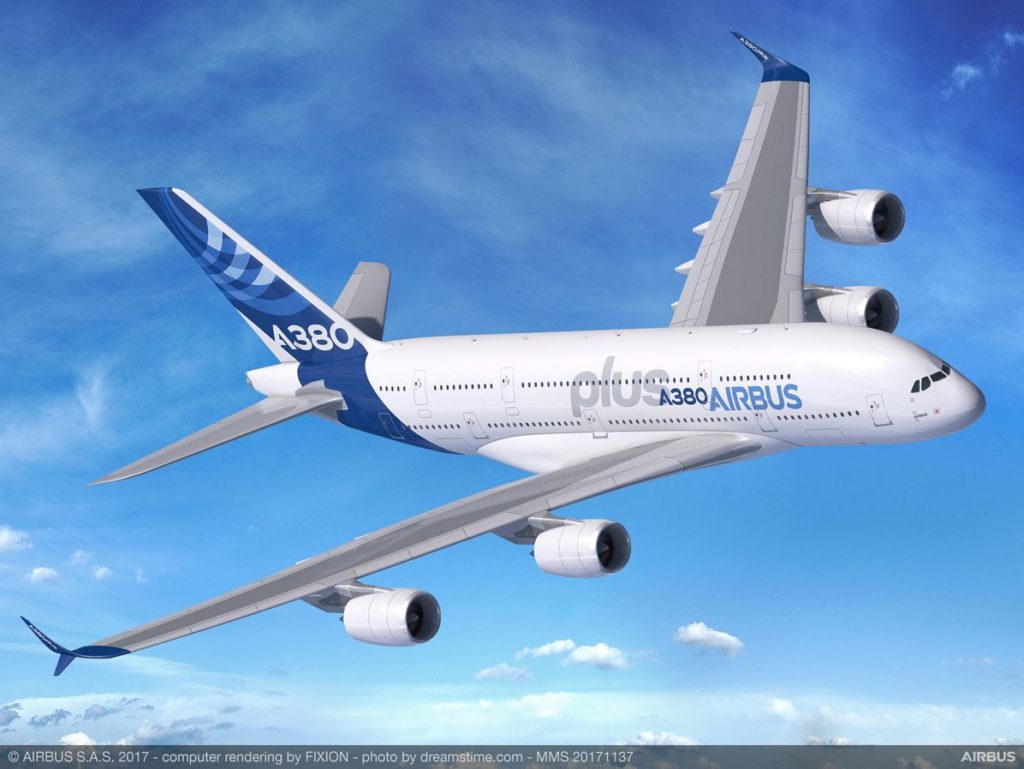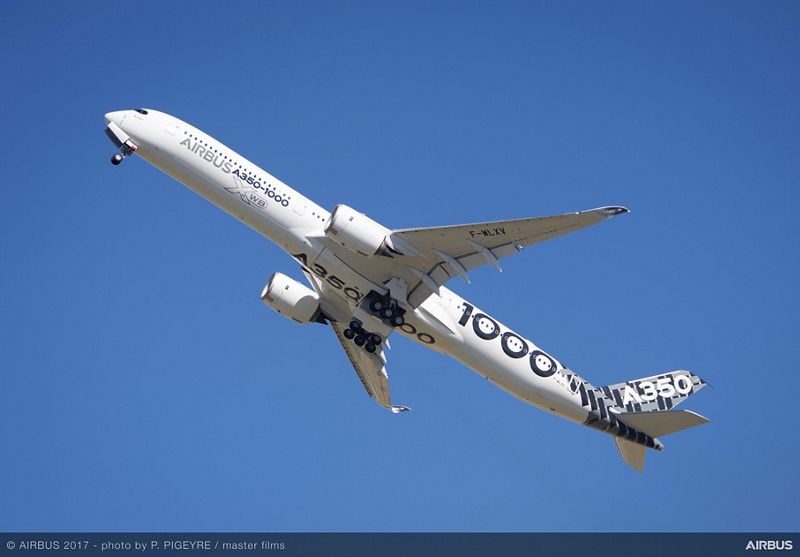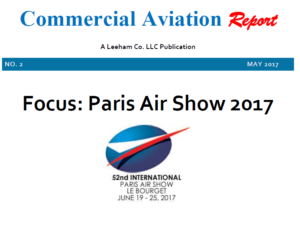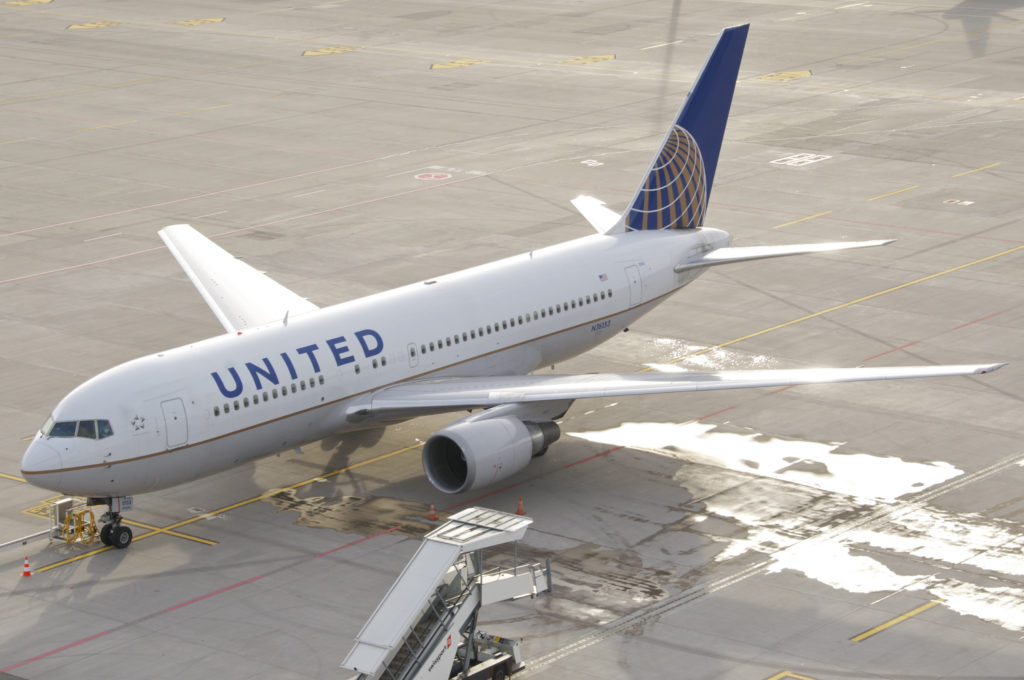Leeham News and Analysis
There's more to real news than a news release.
 Leeham News and Analysis
Leeham News and Analysis
- Solid start for stand-alone GE Aerospace despite cuts to LEAP output April 23, 2024
- SPEEA, Boeing at impasse over safety program, union says April 23, 2024
- Better transparency needed on Boeing’s 1Q earnings call April 22, 2024
- Bjorn’s Corner: New engine development. Part 4. Propulsive efficiency April 19, 2024
- Boeing unlikely to meet FAA’s 90-day deadline for new safety program April 18, 2024
Pontifications: Mississippi’s aerospace footprint
July 17, 2017, © Leeham Co.: Living in the Seattle area, the highest profile, dominant industry is the commercial aerospace sector.
Boeing, of course, headlines just about everything when it comes to aviation.
Boeing’s competition is principally Airbus—or at least it used to be until Boeing claimed teeny tiny Bombardier, a company one-sixth the size of Boeing’s revenues, is poised to put Boeing out of business with BBD’s CSeries.
Posted on July 17, 2017 by Scott Hamilton
A380Plus: First analysis, Part 2
By Bjorn Fehrm
Subscription required.
July 10, 2017, ©. Leeham Co: We went through the changes that are included in the Airbus A380Plus development study last week.
The study packages several improvements to the A380, improving the aerodynamics, increasing the passenger capacity and lowering maintenance costs. The aim is to improve the cost per seat of the A380 to keep it competitive with the new Boeing 777-9. With the rundown of the improvements complete we now use our aircraft model to see if the cost per passenger can compete with the 777.
The aim is to improve the cost per seat of the A380 to keep it competitive with the new Boeing 777-9. With the rundown of the improvements complete we now use our aircraft model to see if the cost per passenger can compete with the 777.
Summary:
- The A380Plus improvements makes the A380 competitive on Cash Operating seat mile Costs with the Boeing 777-9.
- The problem on how to fill the 70% larger A380 remains. It needs other solutions.
Posted on July 10, 2017 by Bjorn Fehrm
Qantas’ ultra-long haul dream, Part 3
By Bjorn Fehrm
Subscription Required
Introduction
July 06, 2017, © Leeham Co.: In previous articles we have learned how to fly the challenging route Sydney-London direct. From a well-informed person in Qantas we learned not to fight the winds. We shall use them. If we fly intelligently we put a cap on the longest distance we fly, even on windy days.
The other way around, London to Sydney, is less of a challenge. The aircraft is blown down under by the winds.
Now we use our aircraft model to understand how Airbus’ A350-900ULR and Boeing’s 777-8 would cope with the route.
Summary:
- The ideas of Qantas did not stop with not fighting the winds.
- We also learned how to simplify the analysis process for URL aircraft and routes.
- Forget about cabins, seats and passengers. It’s all about the hauled weight.
Posted on July 6, 2017 by Bjorn Fehrm
A380Plus: First analysis
By Bjorn Fehrm
July 05, 2017, ©. Leeham Co: Airbus launched the A380Plus development study at the Paris Air Show. The study packages several improvements to the A380, aimed at increasing the capacity and lowering the cost per passenger. The idea is to offer the advantages of an A380neo without changing the engines.
Does this work? We published a first reaction here. We now take a closer look at what was presented and analyze how the package will influence the economics of the A380. Read more
Read more
Posted on July 5, 2017 by Bjorn Fehrm
Airbus augments A350-1000 capability
June 27, 2017, © Leeham Co.: Airbus has quietly announced it will augment the payload and range capability of the Airbus A350-1000 when certified. The latest Aircraft Characteristics for Airport and Maintenance Planning guide (ACAP) for A350 increases the aircraft’s maximum weight before fuel is loaded and its maximum take-off weight.
 At the same time, the A350-900ULR variant’s maximum take-off weight is now available as a standard weight variant (no 10).
At the same time, the A350-900ULR variant’s maximum take-off weight is now available as a standard weight variant (no 10).
Posted on June 27, 2017 by Bjorn Fehrm
Pratt & Whitney, rest of industry, await Boeing decision on NMA
June 1, 2017, © Leeham Co.: Pratt & Whitney, like the airlines, lessors, suppliers and competitors, awaits a decision by Boeing whether it will launch the New Midrange Aircraft for the Middle of the Market sector.
PW’s president, Bob Leduc, said the company is going through its business case studies

Bob Leduc, president of Pratt & Whitney. UTC photo.
even as it provides information to Boeing.
In an interview yesterday with Leduc and PW Commercial Engines president Chris Calio at PW’s pre-Paris Air Show media days near its West Palm Beach (FL) engine production facility, Leduc says the market size and the assumption Boeing will choose two engine makers to power the NMA are among factors that will drive the business case.
Here is a transcript of the interview on the NMA and other topics. The lead into the NMA evolved from a question about the aftermarket services PW—and Boeing—have as strategic profit-center goals.
Posted on June 1, 2017 by Scott Hamilton
Paris Air Show Preview
Subscription Required
Introduction
May 22, 2017, © Leeham Co. The Paris Air Show begins June 17, and few in the industry expect much in the way of orders this year.
The order cycle is on the downward side of the bell curve. Sustaining the 2,000, 3,000 or nearly 4,000 gross orders announced 2011-2013 simply couldn’t be achieved. The “order bubble” had to break, and it did. Last year, Airbus and Boeing reported some 1,400 orders between them.
 Airbus guides that it will tough to achieve a 1:1 book:bill this year. Boeing is running about 1:1 book:bill so far but it also guides conservatively. Still, LNC thinks Boeing might surprise this year–and some of this could be at the Paris Air Show.
Airbus guides that it will tough to achieve a 1:1 book:bill this year. Boeing is running about 1:1 book:bill so far but it also guides conservatively. Still, LNC thinks Boeing might surprise this year–and some of this could be at the Paris Air Show.
Leeham Co.’s new publication, Commercial Aviation Report, provides a Focus Report on the Air Show. This encompasses the expectations for Airbus, Boeing, Bombardier, Embraer, COMAC, Irkut, Mitsubishi, CFM, GE Aviation, Pratt & Whitney and Rolls-Royce into one easy-to-read package.
The pre-airshow press briefings by the OEMs begin next week. We don’t expect any earth-shattering news from these and we wanted to get our views out ahead of these briefings.
Summary
- Boeing wants to launch the 737-10 MAX at the Paris Air Show. This could spur a group of orders that would give Boeing a rare win in the headlines vs Airbus on the latter’s home ground.
- Mitsubishi plans to have its MRJ90 at the Air Show. One airplane entered the paint shop for ANA colors–this might be the one making the appearance.
- Embraer expects to have its KC-390 there. Will the E195-E2 also make an appearance?
Posted on May 22, 2017 by Scott Hamilton
How Airbus can kill the Boeing 797

Artisit concept of the Boeing 797. Rendering via Google images.
May 10, 2017, © Leeham Co.: Airbus can kill the business case for the prospective Boeing 797, the New Midrange Aircraft also known as the Middle of the Market Airplane,
- Reuter’s Tim Hepher has this story.
- CNN’s Jon Ostrower has this story.
All it has to do is move first, instead of waiting for Boeing to launch the 797, something considered likely next year.
If Airbus launched what is commonly called the A322, a larger, longer-range version of the A321neo, the new version would become a true replacement for the Boeing 757, meet economics of the smaller 797, which has a working title of the 797-6, at a much lower capital cost.
Posted on May 10, 2017 by Scott Hamilton
Airbus, Boeing, CFM, GE Aviation, Middle of the Market, MOM, Pratt & Whitney, Rolls-Royce
737-10, 737-9, 767-200, 767-300, 787-8, 797, 7M7, A321NEO, A322, Airbus, Boeing, CFM, GE Aviation, GTF, LEAP, MOM, NMA, Pratt & Whitney, Rolls-Royce, Safran
Could an NMA be made good enough? Part 6
By Bjorn Fehrm
Subscription Required
Introduction
April 27, 2017, © Leeham Co.: We have in several articles gone through the sizing of an NMA (New Midrange Aircraft). We looked at the fuselage, cabin, wings and engines. Now we will sum the exercises and look at the performance of the resulting aircraft.
Boeing is seriously considering launching an NMA. The key to the launch decision will be the airplane’s economics: for development and production as well as operation.
The idea is the NMA shall have “twin aisle comfort with single aisle economics.” We will now use or performance model to analyze if the final aircraft has these characteristics.
Summary:
- An NMA designed to the principles in our articles will have a seven abreast dual aisle cabin. The cabin will increase passenger comfort in the 200 to 260 seat range and speed ground operations.
- Careful design of the fuselage, paired with a modern wing and engines, would produce an NMA with “dual aisle comfort and single aisle economics.”
Posted on April 27, 2017 by Bjorn Fehrm
Airbus, Boeing, CFM, Future aircraft, MOM, Pratt & Whitney, Premium, Rolls-Royce
7M7, A321LR, Airbus, Boeing, CFM, MOM, NMA, Pratt & Whitney, Rolls-Royce
Could an NMA be made good enough? Part 5
By Bjorn Fehrm
Subscription Required
Introduction
April 20, 2017, © Leeham Co.: After defining the fuselage and wings, it’s now time for the engines. We go through the sizing criteria for engines for airliners and find the size of engine that is needed for the NMA.
The NMA will need engines which are larger than the single aisle engines for Airbus’ A320neo and Boeing’s 737 MAX. But they will be smaller than the next size up for modern engines, the GEnx-2B for Boeing’s 747-8.

Figure 1. The NMA takes more and more the shape of a 767 replacement (A United 767-200). Source: United
This means the NMA will need new engines, at least 50% larger than the present engines designed for A320neo and 737 MAX.
Summary:
- An NMA engine will be sized by V2 safety speed or Maximum Continuous Thrust (MCT) criteria.
- The normal Top of Climb (ToC) sizing point will be less stressing for a twin engine airliner like NMA.
Posted on April 20, 2017 by Bjorn Fehrm
Email Subscription
Twitter Updates
My TweetsAssociations
Aviation News-Commercial
Commentaries
Companies-Defense
Resources
YouTube
Archives
- April 2024
- March 2024
- February 2024
- January 2024
- December 2023
- November 2023
- October 2023
- September 2023
- August 2023
- July 2023
- June 2023
- May 2023
- April 2023
- March 2023
- February 2023
- January 2023
- December 2022
- November 2022
- October 2022
- September 2022
- August 2022
- July 2022
- June 2022
- May 2022
- April 2022
- March 2022
- February 2022
- January 2022
- December 2021
- November 2021
- October 2021
- September 2021
- August 2021
- July 2021
- June 2021
- May 2021
- April 2021
- March 2021
- February 2021
- January 2021
- December 2020
- November 2020
- October 2020
- September 2020
- August 2020
- July 2020
- June 2020
- May 2020
- April 2020
- March 2020
- February 2020
- January 2020
- December 2019
- November 2019
- October 2019
- September 2019
- August 2019
- July 2019
- June 2019
- May 2019
- April 2019
- March 2019
- February 2019
- January 2019
- December 2018
- November 2018
- October 2018
- September 2018
- August 2018
- July 2018
- June 2018
- May 2018
- April 2018
- March 2018
- February 2018
- January 2018
- December 2017
- November 2017
- October 2017
- September 2017
- August 2017
- July 2017
- June 2017
- May 2017
- April 2017
- March 2017
- February 2017
- January 2017
- December 2016
- November 2016
- October 2016
- September 2016
- August 2016
- July 2016
- June 2016
- May 2016
- April 2016
- March 2016
- February 2016
- January 2016
- December 2015
- November 2015
- October 2015
- September 2015
- August 2015
- July 2015
- June 2015
- May 2015
- April 2015
- March 2015
- February 2015
- January 2015
- December 2014
- November 2014
- October 2014
- September 2014
- August 2014
- July 2014
- June 2014
- May 2014
- April 2014
- March 2014
- February 2014
- January 2014
- December 2013
- November 2013
- October 2013
- September 2013
- August 2013
- July 2013
- June 2013
- May 2013
- April 2013
- March 2013
- February 2013
- January 2013
- December 2012
- November 2012
- October 2012
- September 2012
- August 2012
- July 2012
- June 2012
- May 2012
- April 2012
- March 2012
- February 2012
- January 2012
- December 2011
- November 2011
- October 2011
- September 2011
- August 2011
- July 2011
- June 2011
- May 2011
- April 2011
- March 2011
- February 2011
- January 2011
- December 2010
- November 2010
- October 2010
- September 2010
- August 2010
- July 2010
- June 2010
- May 2010
- April 2010
- March 2010
- February 2010
- January 2010
- December 2009
- November 2009
- October 2009
- September 2009
- August 2009
- July 2009
- June 2009
- May 2009
- April 2009
- March 2009
- February 2009
- January 2009
- December 2008
- November 2008
- October 2008
- September 2008
- August 2008
- July 2008
- June 2008
- May 2008
- April 2008
- March 2008
- February 2008



